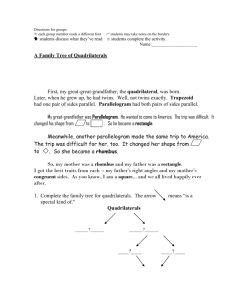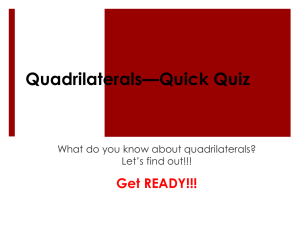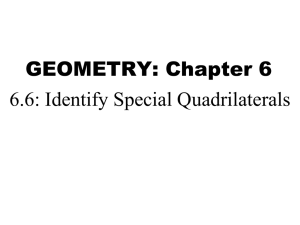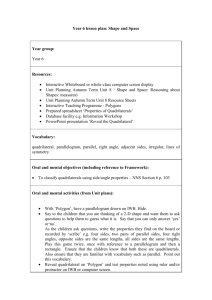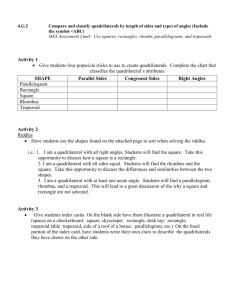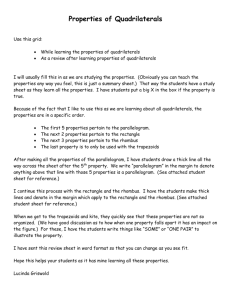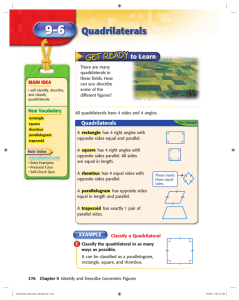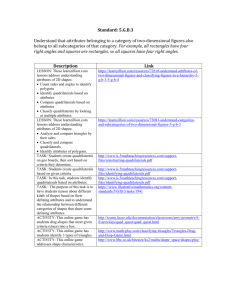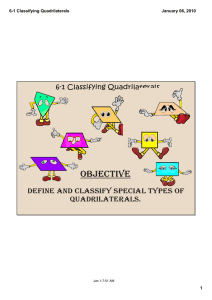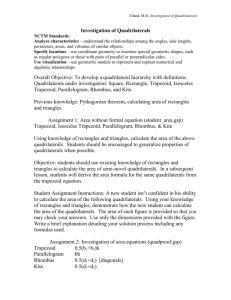第三學習階段
advertisement
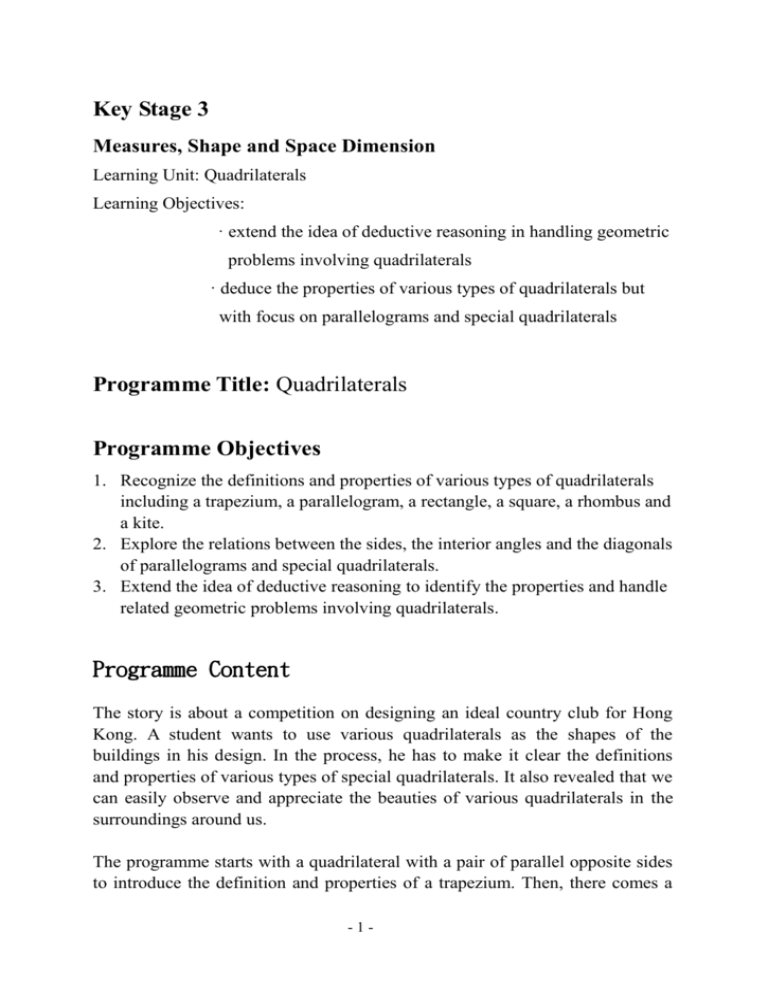
Key Stage 3 Measures, Shape and Space Dimension Learning Unit: Quadrilaterals Learning Objectives: · extend the idea of deductive reasoning in handling geometric problems involving quadrilaterals · deduce the properties of various types of quadrilaterals but with focus on parallelograms and special quadrilaterals Programme Title: Quadrilaterals Programme Objectives 1. Recognize the definitions and properties of various types of quadrilaterals including a trapezium, a parallelogram, a rectangle, a square, a rhombus and a kite. 2. Explore the relations between the sides, the interior angles and the diagonals of parallelograms and special quadrilaterals. 3. Extend the idea of deductive reasoning to identify the properties and handle related geometric problems involving quadrilaterals. Programme Content The story is about a competition on designing an ideal country club for Hong Kong. A student wants to use various quadrilaterals as the shapes of the buildings in his design. In the process, he has to make it clear the definitions and properties of various types of special quadrilaterals. It also revealed that we can easily observe and appreciate the beauties of various quadrilaterals in the surroundings around us. The programme starts with a quadrilateral with a pair of parallel opposite sides to introduce the definition and properties of a trapezium. Then, there comes a -1- quadrilateral with two pairs of opposite sides, a parallelogram. The various properties of a parallelogram: opposite sides equal, opposite angles equal, diagonals bisect each other, are explored. Deductive reasoning, instead of intuitive approach is employed in the investigation process. The relation between a rectangle, a rhombus and a square is introduced and their properties are elaborated. In addition, the programme also comes across the introduction of a kite. It emphasizes that a kite is not a parallelogram. Examples on solving geometric problems involving quadrilaterals are provided. To further consolidate the recognition of the definitions of various quadrilaterals, the last part of the programme illustrates that the properties of a quadrilateral, on the converse, can be used as tools to identify its special type. Worksheet Answers 1. a = 400, x = 3, y = 5. 2. ∠ ABE = 800 3. Proofs are omitted. 4. Proofs are omitted. -2- Key Stage 3 ETV Programme《Quadrilaterals》 Worksheet Review some problems discussed in the programme. 1. ABCD is a parallelogram. ∠ DAC = 2a+100 , ∠ CAB = 500 , ∠ BCD = 1400 , AD = (5x-6) cm, BC = 9 cm, OA = (2x+y) cm, OC = (3x+2) cm. Find the values of a, x and y. 2. BCDE is a rhombus and ∠ DEC = 400 . Find the value of ∠ ABE. -3- 3. ABCD is a kite. DA = DC, BA = BC. (i) Prove that ∠ BDA = ∠ BDC. (ii) Prove that △ADE ≅ △CDE. (iii) Prove that AC ⊥ DB. 4. In the quadrilateral PQRS, the diagonals are perpendicular bisectors of each other, that is PR ⊥ SQ and PO = QO = RO = SO. (i) Prove that: PQ = QR = RS = SP. (ii) Prove that PQRS is a square. -4-

